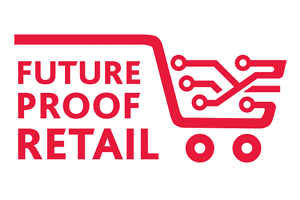AI-Powered Product Design and Focus Groups

The Future of Studying Your Customers? Turn Them into Digital Twins!
On an earth outpost in a galaxy far, far away, it’s your typical workday, and the first thing on your schedule is a meeting to discuss the product lineup for your company’s Spring 2049 collection. You put on your VR headset and prepare to view the mockups in a virtual environment. But these aren’t the mockups of the past — you are not looking at 2D sketches. The apparel before your eyes is worn by a 3D avatar traversing a severe rainstorm.
When the scene ends, it is replaced by a dynamic screen of charts and statistics pertaining to the All-Weather Dress the avatar was wearing. The avatar was a digital twin representing your target customer, and the statistics in front of you detail how the All-Weather Dress holds up to extreme weather conditions and how the artificial intelligence-generated (AI) customer feels about the dress. Based on the results, it looks like this design is ready to be rolled out.

Digital twin technology has been available for years, but with the help of generative AI, retailers will find this technology can be more powerful, more cost-effective, and potentially designed faster. Now, with generative AI, digital twins have greater power to unlock out-of-this-world virtual replicas of products, customer segments, or scenarios, leading to several new and exciting use cases. These virtual twins use data to provide accurate and dynamic representations of their physical counterparts, from which retailers can learn more about customers’ preferences and evolving demands. Retailers can use AI-powered digital twins to segment customers on an individual level, empowering brands to understand customer demands with more granularity than ever before.
Leveraging digital twins for product development is another powerful use case. Digital twins boosted with generative AI can help expedite the research and development (R&D) process and enhance merchandise performance, testing design changes against real world data to quickly see how they would work in practice.
According to Vantage Market Research, global digital-twin market revenue is expected to reach $53 billion by 2028. Some retailers and manufacturers are already leveraging digital twins for product development. For example, one vehicle manufacturer is already creating a digital twin for each car it produces, underscoring the appetite for this type of technology today.
In an era saturated by an abundance of goods, retailers must learn to correctly anticipate customer sentiments and deliver on product expectations before the competition does.
Ready to teleport to a place where your customer experience is light years ahead of the competition? Discover how digital twins unlock stellar products in our 60-second Retail Podcast episode: Embracing Digital Twin Technology for Enhanced Performance.
Getting Customer Feedback and Products to Market at the Speed of Light
Retailers rely on customer data to shape important decisions about their inventories, product launches, and marketing campaigns. According to BDO’s Retail CFO Outlook Survey, 59% of retail CFOs plan to leverage customer data to better predict, align, and manage demand to inform inventory decisions. In practice, applying that data effectively has not always been easy, causing retailers to increasingly turn to AI to analyze customer data and enhance decision making. This in turn allows them to better meet consumers’ increasing demands for personalization, convenience, and quality.
Retailers looking to uplevel their digital transformation efforts and tap the full potential of customer data should consider using generative AI to power digital twins. Though digital twins on their own are not new, generative AI can propel them into a new galaxy. AI also enables organizations to quickly ingest and analyze higher volumes of data, which leads to faster actualization of new insights and improved product development.
AI-powered digital twins offer several novel use cases. For example, they open the door to AI-generated customer focus groups. Retailers can use generative AI to make digital twins for individual customers, which answer questions and provide responses based on the customer data from which they were constructed. The insights a retailer can draw from a focus group made up of digital twins allow them to gauge their customers’ priorities and sentiments ahead of product launches, leading to better business decisions without the lengthy — and sometimes costly — process of conducting a people-based focus group.
Retailers can use digital twins to help alleviate another substantial pain point: returns. According to Optoro, the average return rate for eCommerce purchases in 2023 was as high as 17.6%, with over $743 billion in items returned. If retailers test their merchandise with digital twins before launch, a positive response from AI-generated customers could indicate the item will see fewer returns.
Digital twins can also be leveraged for AI-powered product development. According to XCube Labs, digital twin technology cut development time in half and further advancements are expected with the integration of AI. In practice, digital twins allow retailers to create and test more design options without the added cost of producing multiple physical prototypes. Retailers can then glean insights on how each item will perform. Customers benefit from streamlined product development, meaning merchandise that needs improvements can be researched, upgraded, and released to market faster.
Retailers can even test marketing messages on digital twins. Just as retailers use AI-generated customers to test new items, they can also use them to forecast reactions to upcoming campaigns and make necessary adjustments before launch.
As more retailers harness the ability to test scenarios and products with digital customer focus groups and receive immediate insights, they will find this technology is a game changer. Retailers who want to future-proof their business will apply AI-driven digital twin technology to enhance productivity and the customer experience, ultimately driving increased sales and brand loyalty.
AI Governance is Crucial to Support Digital Twins

For digital twins to be effective, safe, and secure, retailers must approach implementation – and the hurdles that come with it – strategically. Before retailers develop digital twins, they must carefully assess various elements of their business to address potential gaps in technology, identify possible areas of incompatibility, and establish their data foundation. This process will help retailers understand where digital twins fit into their current tech stack, which AI use cases are right for their organization, what their KPIs should be, and the potential impact of their data.
Once these foundational components have been addressed, retailers should turn their attention to AI governance. This will affirm ethical standards, data integrity and quality, and regulatory compliance, enhancing the overall reliability of the digital twins.
To reinforce their commitment to good AI governance, retailers should take the following steps:
- Assign roles, develop an AI framework, and create usage guidelines to kickstart AI projects
- Adopt technical standards, guidelines, and relevant certifications to align AI with the retail organization’s core values and goals
- Keep privacy and data protection top of mind from the start and have employees test the AI’s inputs and outputs
- Track and analyze AI development and implementation to avoid negative impact and mitigate risks
- Protect individual rights by monitoring and reporting compliance with human rights standards
- Conduct impact assessments and audits for high-risk AI systems, such as AI leading to customer profiling, to confirm compliance with legal, ethical, and technical standards
- Ensure employees adhere to testing and monitoring of high-risk AI systems throughout their lifecycle, such as guaranteeing accurate record keeping and reporting non-compliance incidents
Without proper boundaries, an AI tool meant to decrease costs and enhance the customer experience could easily have the opposite effect. For example, AI systems that have not been vetted for biases can rapidly tarnish a brand’s reputation, negating the expected return on investment (ROI). By implementing proper AI governance, retailers can trust that the inputs and outputs are sound enough to help them make decisions.
Retailers who are interested in implementing digital twins in their operations may benefit from teaming up with a strategic partner to enhance AI governance and oversight.
Does AI Implementation feel like trying to navigate an unknown galaxy? To pinpoint your organization's position within this universe and better plot your course, check out our AI Journey Assessment.
How BDO Helps Retailers Build Digital Twins to Anticipate Customer Behavior
While there are inklings of digital twin and generative AI use in retail already, the industry is only just beginning to leverage these innovations. To stay ahead of the curve, retailers seeking to future-proof their businesses should assess the value AI-driven digital twins could bring to their organization now.
BDO Digital partners with retail organizations to prepare for, build, and integrate innovative AI applications that can propel your retail products to the next level. BDO’s AI professionals can foster AI education, help establish AI governance, develop an operational plan to integrate AI solutions that drive meaningful results, and help safeguard your customers and reputation through training around best practices.
Whether you’re looking to learn more about AI, discover new use cases, establish safe practices, or start creating digital twins of your customers, BDO can work with you every step of the way.
Double up on your digital capabilities.
BDO’s Retail and Consumer Products professionals offer deep industry knowledge around AI-enabled applications and leveraging the power of technology to maximize customer satisfaction.